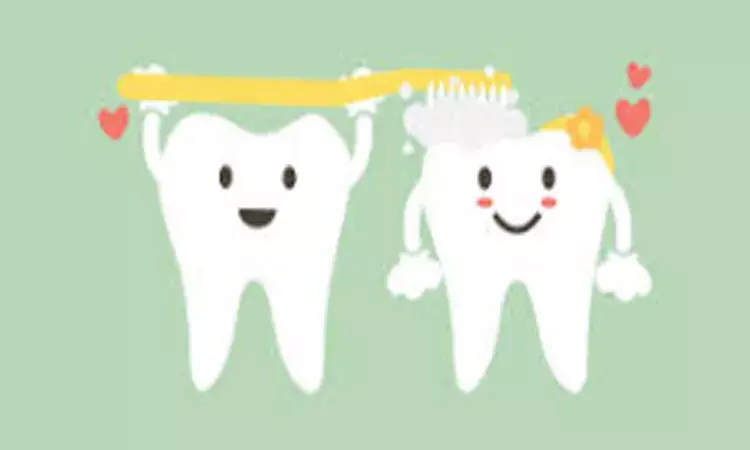- Home
- Medical news & Guidelines
- Anesthesiology
- Cardiology and CTVS
- Critical Care
- Dentistry
- Dermatology
- Diabetes and Endocrinology
- ENT
- Gastroenterology
- Medicine
- Nephrology
- Neurology
- Obstretics-Gynaecology
- Oncology
- Ophthalmology
- Orthopaedics
- Pediatrics-Neonatology
- Psychiatry
- Pulmonology
- Radiology
- Surgery
- Urology
- Laboratory Medicine
- Diet
- Nursing
- Paramedical
- Physiotherapy
- Health news
- Fact Check
- Bone Health Fact Check
- Brain Health Fact Check
- Cancer Related Fact Check
- Child Care Fact Check
- Dental and oral health fact check
- Diabetes and metabolic health fact check
- Diet and Nutrition Fact Check
- Eye and ENT Care Fact Check
- Fitness fact check
- Gut health fact check
- Heart health fact check
- Kidney health fact check
- Medical education fact check
- Men's health fact check
- Respiratory fact check
- Skin and hair care fact check
- Vaccine and Immunization fact check
- Women's health fact check
- AYUSH
- State News
- Andaman and Nicobar Islands
- Andhra Pradesh
- Arunachal Pradesh
- Assam
- Bihar
- Chandigarh
- Chattisgarh
- Dadra and Nagar Haveli
- Daman and Diu
- Delhi
- Goa
- Gujarat
- Haryana
- Himachal Pradesh
- Jammu & Kashmir
- Jharkhand
- Karnataka
- Kerala
- Ladakh
- Lakshadweep
- Madhya Pradesh
- Maharashtra
- Manipur
- Meghalaya
- Mizoram
- Nagaland
- Odisha
- Puducherry
- Punjab
- Rajasthan
- Sikkim
- Tamil Nadu
- Telangana
- Tripura
- Uttar Pradesh
- Uttrakhand
- West Bengal
- Medical Education
- Industry
Simulated toothbrushing abrasion increases surface roughness of all resin composites: Study

Researchers from a recent study have observed that Simulated toothbrushing abrasion led to an increase in surface roughness and a decrease in gloss for DMA-free composite and Bis-GMA-free composite with a DMA-based composite.
The study is published in the Dentistry Journal.
Murtadha AlAli and colleagues from the Prosthodontic Department, Alahsa Dental Centre, Ministry of Health, Alahsa, Saudi Arabia carried out the present study to evaluate and compare the surface roughness and gloss of a DMA-free composite and Bis-GMA-free composite with a DMA-based composite before and after toothbrushing simulation.
Fifteen dimensionally standardised composite specimens of three nano-hybrid resin composites (Tetric EvoCeram, Admira Fusion, and Venus Diamond) were used. Five specimens from each composite were polished and then subjected to a toothbrushing simulator.
Surface roughness (Ra) and gloss were measured before toothbrushing and after 5000, 10,000, 15,000, and 20,000 toothbrushing cycles. The data was analysed using 5 × 3 ANOVA to assess surface roughness and gloss values and pairwise comparisons in the form of Tukey post hoc tests were performed to interpret main effects.
The following findings were highlighted-
a. For all tested materials, surface roughness increased, and gloss decreased after toothbrushing abrasion.
b. Surface roughness (Ra) values ranged from 0.14 to 0.22 μm at baseline and increased to between 0.41 and 0.49 μm after 20,000 toothbrushing cycles.
c. Gloss values ranged between 31.9 and 50.6 GU at baseline and between 5.1 and 19.5 GU after 20,000 toothbrushing cycles.
d. The lowest initial Ra value was detected in Venus Diamond and the highest initial gloss value was detected in Tetric EvoCeram.
Therefore, the authors concluded that "simulated toothbrushing abrasion led to an increase in surface roughness and a decrease in gloss for all tested materials. Venus Diamond had the smoothest surface and Tetric EvoCeram had the glossiest surface after polishing and following 20,000 cycles of toothbrushing abrasion. Admira Fusion demonstrated the roughest surface and had the lowest gloss values before and after toothbrushing abrasion."
Dr. Nandita Mohan is a practicing pediatric dentist with more than 5 years of clinical work experience. Along with this, she is equally interested in keeping herself up to date about the latest developments in the field of medicine and dentistry which is the driving force for her to be in association with Medical Dialogues. She also has her name attached with many publications; both national and international. She has pursued her BDS from Rajiv Gandhi University of Health Sciences, Bangalore and later went to enter her dream specialty (MDS) in the Department of Pedodontics and Preventive Dentistry from Pt. B.D. Sharma University of Health Sciences. Through all the years of experience, her core interest in learning something new has never stopped. She can be contacted at editorial@medicaldialogues.in. Contact no. 011-43720751
Dr Kamal Kant Kohli-MBBS, DTCD- a chest specialist with more than 30 years of practice and a flair for writing clinical articles, Dr Kamal Kant Kohli joined Medical Dialogues as a Chief Editor of Medical News. Besides writing articles, as an editor, he proofreads and verifies all the medical content published on Medical Dialogues including those coming from journals, studies,medical conferences,guidelines etc. Email: drkohli@medicaldialogues.in. Contact no. 011-43720751


